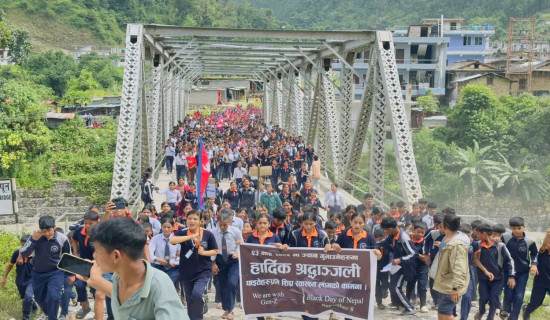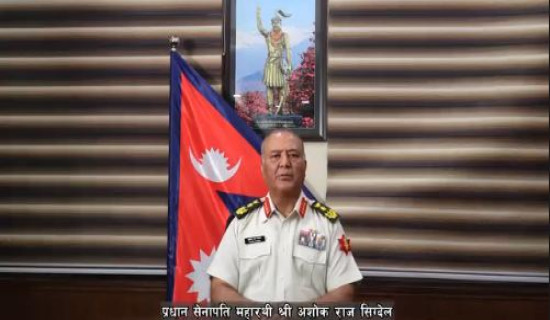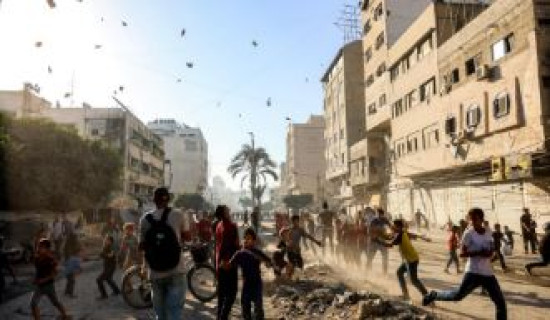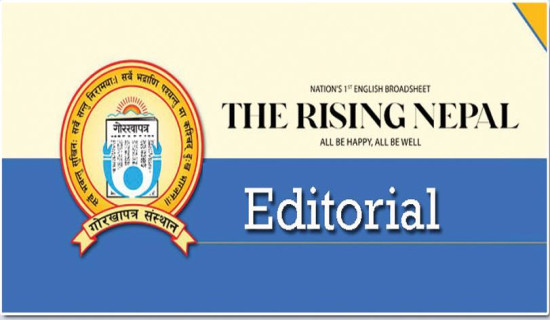- Saturday, 13 September 2025
A reassuring tale of two cities
Kathmandu/Lalitpur, July 9: Kathmandu Valley, known for its rich history and heritage, is home to people of all backgrounds from across the country and the political and economic nerve-centre of the nation. The Valley also has two bustling metropolitan cities neighbouring each other – Kathmandu and Lalitpur.
The former, the largest city of the nation and its capital city, is led by Balendra Shah aka Balen, the rapper-and-engineer elected to his first public office without the backing of any political party.
And the latter, the city of fine arts that only became a metropolis in 2017, is headed by Nepali Congress’s Chiri Babu Maharjan, a man serving his second term as mayor and someone who first became an elected representative in the 1980s.
Officials of both the Kathmandu Metropolitan City (KMC) and Lalitpur Metropolitan City (LMC), located next to each other not just on the map but also in the alphabetical order, claim to be working towards improving the overall quality of life of their citizens, addressing urban challenges and promoting sustainable development.
Kathmandu Metropolitan City
For this, KMC presented a budget of Rs. 25.54 billion for the fiscal year 2023/24.
On the beautification front in particular, Deputy Mayor of the city Sunita Dangol shared that they had announced the three-year municipal pride project ‘Beautiful Metropolis ‘ and golden projects ‘Dust-Free Kathmandu’ and ‘Bright City, My City’, among others. The three projects have been allotted a budget of Rs. 250 million, Rs. 1 billion and Rs. 300 million respectively.
Talking to The Rising Nepal, Dangol said they had already started colouring walls, planting trees and adding greenery to the streetscape in some areas as pilot projects. “Once the presented budget is approved by the municipal assembly, we will prepare necessary plans to achieve the goals outlined therewith,” she added.
Beautification of the largest metropolis with highest number of wards is challenging indeed. For this, she informed that the metro planned to have a focal person in every ward to manage the projects in coordination with the wards and the locals.
She said that the metro’s team would identify an area’s needs and beautify it accordingly.
Moreover, KMC Spokesperson Nabin Manandhar said that the metropolis had formed a Greenery Promotion Department to “make the city clean and green”. The department will coordinate with all 32 wards and engage with the local communities to prepare action plans for proceeding, he said.
The city has prioritised urban greenery as a way to enhance its beauty and, as informed by Manandhar, has begun planting trees on the banks of rivers and roadsides. “We have placed flower pots in places where plantation is not possible,” he stated.
“We have also painted street walls in Ward No. 31 in the same colour to bring uniformity.”
But some KMC denizens feel that this may not have been the best thing to do. Reetu Barsha Shrestha, a resident of Basuki Marga in Ward 31, said that painting walls was okay but painting the section of houses facing the road was not.
“My neighbour’s house, originally light-blue in colour, had no perimeter wall. It stood right next to the road,” she explained, adding, “The metropolitan city painted its ground floor orange to match with the other structures of the street.”
“Now, the house looks weird, with the ground floor orange and the rest of it blue. This has happened to all houses without walls,” she shared.
Shrestha’s own house lies at an intersection, with one wall facing Basuki Marga and the other Ghumti Kumari Marga. This has confused her as to what colour her home’s walls will be turned into.
“Instead of painting roadside structures, the local government should focus on blacktopping the roads. This would automatically make localities beautiful by making it clean, and it would also make it much easier to walk.”
KMC had initiated several campaigns to make it an attractive urban hub under former Mayor Bidya Sundar Shakya too. But the steps taken by current Mayor Shah have been more visible and made more headlines.
Not all of those steps, though, have yielded fruits yet. Measures like hav-ing people segregate their garbage into degradable and non-degradable, demolishing illegally built structures, exposing the underground portions of the
Tukucha River and removing squatters from riverbanks have slowed or stopped due to various reasons. KMC’s treatment of street vendors has also met with strong online and offline criticism.
Lalitpur Metropolitan City
LMC’s announced budget for the coming fiscal year is Rs. 6.50 billion – four times less than its counterpart across the Bagmati River. But, officials are determined to use this as efficiently as possible to beautify the town.
“A beautiful city is one that contributes to bettering the lives of its residents,” Lalitpur Mayor Maharjan stated his belief. And for this, his metropolis has also focused on greenery. “We have built parks and pocket parks and have also taken care of them,” Maharjan shared.
The metro has also made efforts to curtail the encroachment of open spaces by vehicle parking. In Pulchowk, Mangal Bazaar, Jawalakhel and Batuk Bhairav, among other places, the metropolis has put flower vases and installed seating arrangements in places once used to park two- and four-wheelers, much to the delight of many locals The Rising Nepal talked to over the past week.
“Kids have a place to play and run around and adults have somewhere to sit and take a breath,” said Lalitpur denizen Anshu Pradhan, referring to the space cleared in front of the Sumeru Saving and Credit Co-operative at Pulchowk.
“Yes, we need parking spaces but we need open spaces too,” said Sanjay Dongol, a resident of Haugal, near Patan Durbar Square. “They offer refuge during disasters and a respite from the congestion of the inner city on regular days.”
Maharjan also emphasised that he had neither given nor would give any public land or plot under the metro’s jurisdiction to any individual or institution for any purpose. “Even when asked by ministers, I have not provided any land to any entity and I do not intend to do so in the future,” he stressed.
LMC has also been managing the wires that hang cluttered from electric poles and affect the beauty of this historic city. In February, it issued a notice asking the relevant organisations to manage the wires around heritage sites within seven days. It also formed a committee under Deputy Mayor Manjali Shakya Bajracharya for the same.
“We are clearing the wires by prioritising areas and in consultation with the stakeholders,” Mayor Maharjan informed. “In the first phase, we managed the cables along the main road from Kupondole to Jawalakhel. Then, we managed those along the route of the Machhindranath Jatra.”
“We are continuing with this work,” he said.
Lalitpur also gained prominence for marking a portion of its roads as cycle lanes. The lanes, many of which are shared, except for the ones on the Satdobato-Lagankhel road section, are painted green and are hailed by cyclists inside and outside the city. “But, is it no longer a priority?” questioned Sushil Karki.
“Weather and repaving of roads has erased the green paint and lane lines, and the city’s initial desire to promote cycling seems to have waned,” Karki, who lives in Ekantakuna and cycles to his office at Tripureshwor every day, complained.
But he praised the metro for installing bright street lights. “Anyone who crosses the Bagmati bridge from Thapathali to Kupondole at night notices the difference,” he said.
As per LMC, it has installed 669 smart street lights on three routes, namely, Kupondole to Satdobato via Lagankhel, Hotel Himalaya to Lagankhel via Kwalkhu and Mangal Bazaar, and Pulchowk to Gwarko via Mangal Bazaar. Additionally, it has installed 1,400 lights in the wards outside Ring Road that include the areas of Sunakothi, Bungamati, Khokana, Harisiddhi, Bhaisepati and Dhapakhel.
The metropolis has also begun work on installing high mast lights at 12 locations inside and outside the Ring Road. These lights are mounted on 16-metre-tall poles and can illuminate 60 to 100 metres of area around them.
However, the thing many in LMC feel is going against the concept of city beautification are the recent diggings. “Lord knows why they keep digging up the roads,” a few people sitting around the Baglamukhi Temple on Saturday exclaimed.
“It seems that at any given point, a bulldozer is tearing up the ground in one part of the city or another,” Niravi Shrestha, a resident of Prayag Pokhari, joked.
While acknowledging the trouble this might have caused, Maharjan said that the diggings were to fulfil his election promise of supplying drinking water to Lalitpur’s residents. “We are repairing and replacing damaged pipes to ensure that people get water from their taps, not air.”
Similarly, with a Rs. 540 million grant from the Asian Development Bank, LMC has been constructing 2.8 kilometres of modern drainage from Lagankhel to Bagmati. This has eliminated the problem of water pooling at the historic Patan Durbar Square. “We no longer get swimming pools there,” Mayor Maharjan expressed happily.



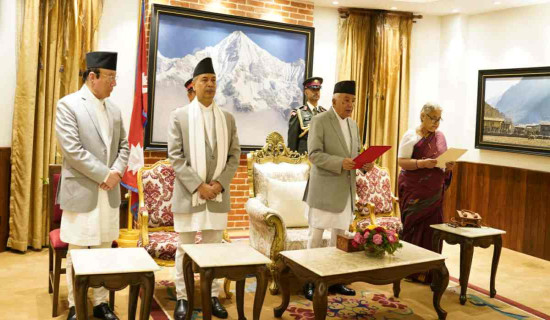

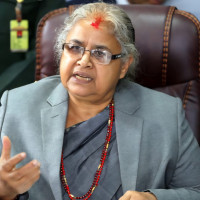


-square-thumb.jpg)
